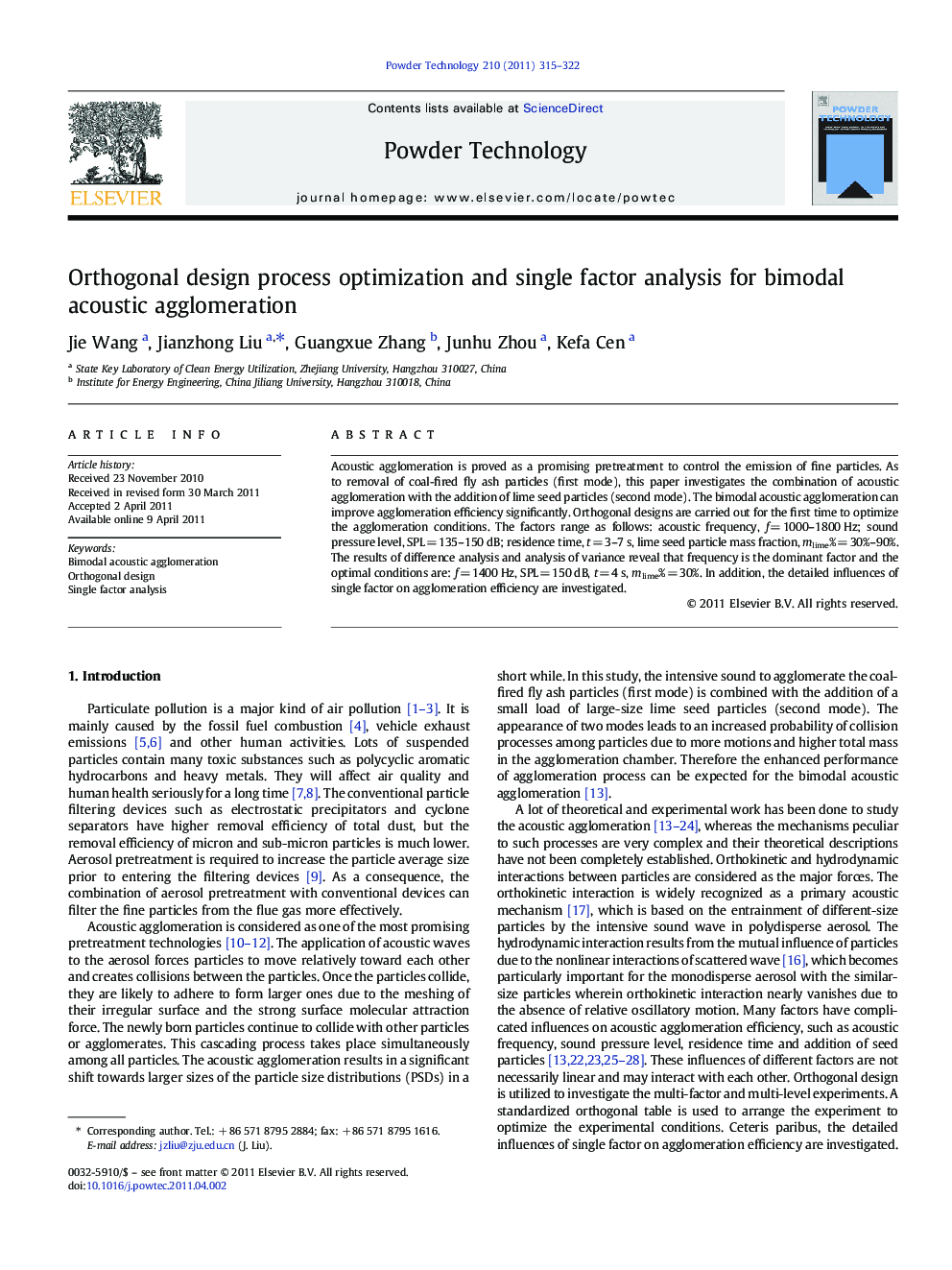| Article ID | Journal | Published Year | Pages | File Type |
|---|---|---|---|---|
| 237582 | Powder Technology | 2011 | 8 Pages |
Acoustic agglomeration is proved as a promising pretreatment to control the emission of fine particles. As to removal of coal-fired fly ash particles (first mode), this paper investigates the combination of acoustic agglomeration with the addition of lime seed particles (second mode). The bimodal acoustic agglomeration can improve agglomeration efficiency significantly. Orthogonal designs are carried out for the first time to optimize the agglomeration conditions. The factors range as follows: acoustic frequency, f = 1000–1800 Hz; sound pressure level, SPL = 135–150 dB; residence time, t = 3–7 s, lime seed particle mass fraction, mlime% = 30%–90%. The results of difference analysis and analysis of variance reveal that frequency is the dominant factor and the optimal conditions are: f = 1400 Hz, SPL = 150 dB, t = 4 s, mlime% = 30%. In addition, the detailed influences of single factor on agglomeration efficiency are investigated.
Graphical abstractThis paper investigates the combination of acoustic agglomeration and the addition of large seed particles (second mode) to removal of coal-fired fly ash particles (first mode). The bimodal acoustic agglomeration can improve agglomeration efficiency significantly with the greatest improvement of 20.04%.Figure optionsDownload full-size imageDownload as PowerPoint slideResearch highlights► The introduction of lime seed particles to acoustic agglomeration is studied. ► Orthogonal design is utilized to optimize bimodal acoustic agglomeration conditions. ► The detailed analyses of single factor influence on agglomeration are investigated.
